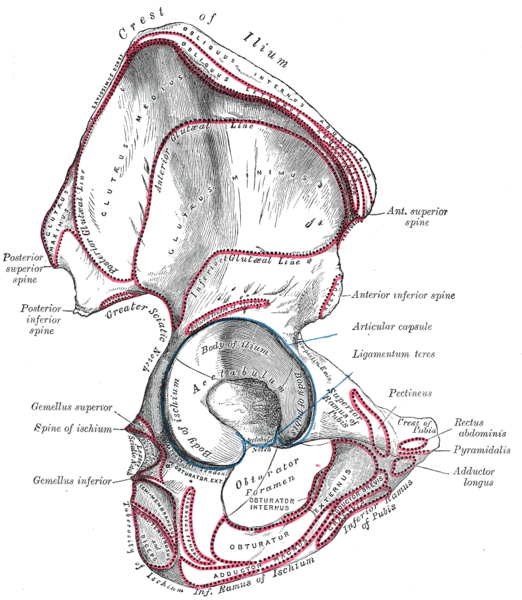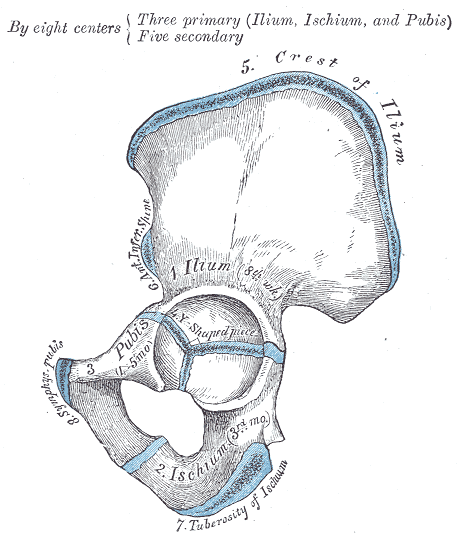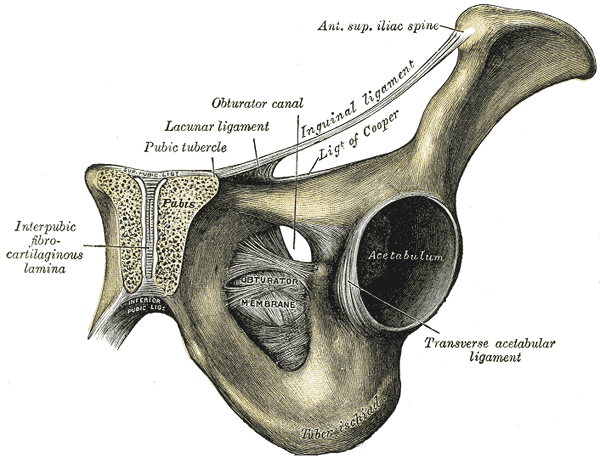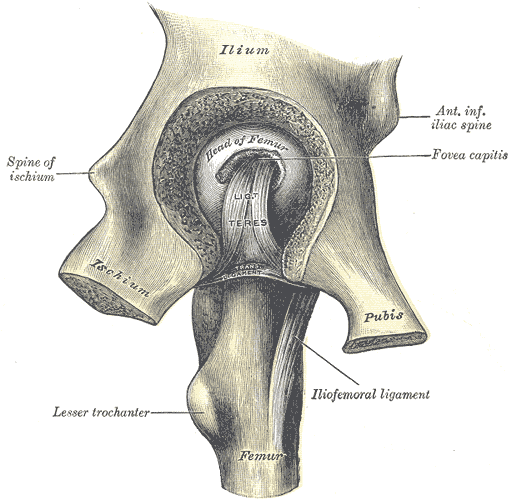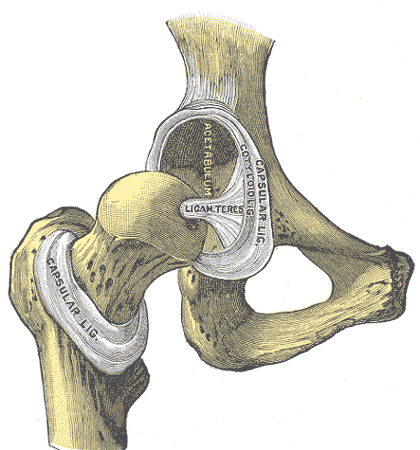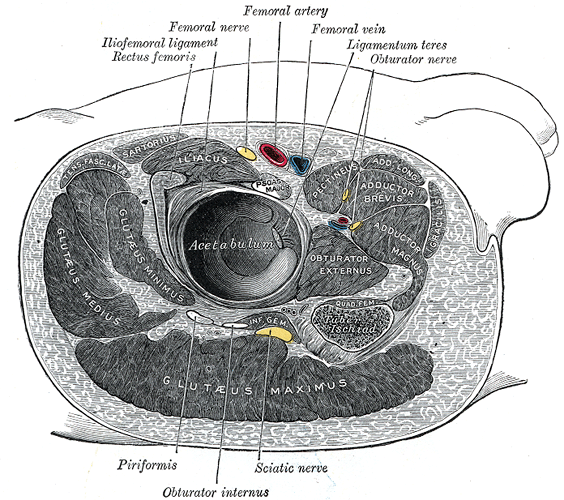Acetabulum
Template:Infobox Bone Editor-In-Chief: C. Michael Gibson, M.S., M.D. [1]
The acetabulum is a concave surface of the pelvis. The head of the femur meets with the pelvis at the acetabulum, forming the hip joint.
Structure
There are three bones of the os coxae (hip bone) that come together to form the acetabulum. Contributing a little more than two-fifths of the structure is the ischium, which provides lower and side boundaries to the acetabulum. The ilium forms the upper boundary, providing a little less than two-fifths of the structure of the acetabulum. The rest is formed by the pubis, near the midline.
It is bounded by a prominent uneven rim, which is thick and strong above, and serves for the attachment of the glenoidal labrum (cotyloid ligament), which contracts its opening, and deepens the surface for formation of the hip joint. At the lower part of the acetabulum is the acetabular notch, which is continuous with a circular depression, the acetabular fossa, at the bottom of the cavity of the acetabulum. The rest of the acetabulum is formed by a curved, crescent-moon shaped surface, the lunate surface, where the joint is made with the head of the femur. Its counterpart in the pectoral girdle is the glenoid fossa.
In reptiles and in birds, the acetabula are deep sockets.
Etymology
The word acetabulum means "little vinegar cup", and was the Latin word for a small vessel for storing vinegar (see acetabulum). The word was later also used as a unit of volume, equal to roughly 270 ml.
Additional images
-
Right hip bone. External surface.
-
Plan of ossification of the hip bone.
-
Symphysis pubis exposed by a coronal section.
-
Left hip-joint, opened by removing the floor of the acetabulum from within the pelvis.
-
Hip-joint, front view.
-
Capsule of hip-joint (distended). Posterior aspect.
-
Structures surrounding right hip-joint.
External links
- Template:SUNYAnatomyLabs - "Major Joints of the Lower Extremity: Hip joint"
- Template:SUNYAnatomyLabs - "The Female Pelvis: Articulated bones of pelvis"
cs:Acetabulum
de:Hüftgelenk#Anatomie
it:Cotile
nl:Acetabulum
fi:Lonkkamalja
sv:Höftledsgrop
tl:Acetabulum
uk:Вертлюжна западина
Template:WH
Template:WS
